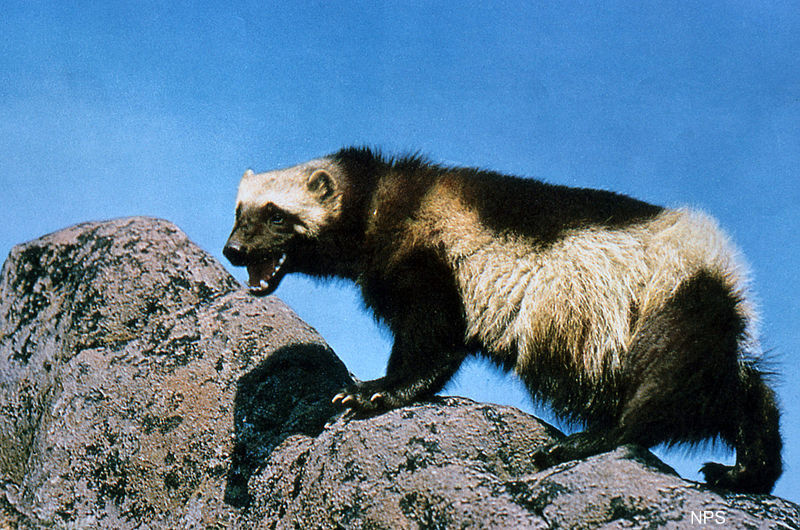
If you saw the headline "Warming imperils wolverines" last week and all you could think of was Hugh Jackman, don't worry -- you're not alone. Most Americans are much more familiar with the X-Men superhero than the largest land-dwelling member of the weasel family. Yet, like their Hollywood counterpart, wolverines are fierce beasts in serious trouble.

In real life, wolverines measure up to three feet long and can weigh up to 30 pounds, resembling either a giant skunk or a tiny bear with a bushy tail. They have exceptionally thick fur, large paws, burly claws and a keen sense of smell, all of which help them survive some of the harshest conditions on the planet. Though able to kill prey far larger than themselves and fierce enough to stand their ground with wolves, mountain lions and bears, wolverines are primarily scavengers, using their nose to find frozen bones buried beneath the snow and fresh carcasses from miles away. Wolverines are also expert mountain climbers. One wolverine in Glacier National Park famously scaled the last 5,000 feet of a craggy peak in just 90 minutes.
Wolverines may be tough as nails, but scientists believe there are only about 250 to 300 of them in the lower 48, mostly in the northern Cascades and Rocky Mountains. Because these animals reproduce very slowly and stick to rugged alpine regions with deep snow, populations tend to be very isolated from each other. Researchers estimate that as few as 35 individual wolverines are successfully breeding in the lower 48 at any one point in time.
But wolverines have a much bigger problem than small numbers: climate change. Just as melting sea ice is leaving polar bears without a place to hunt, changes to annual mountain snowpack are shrinking the amount of viable wolverine habitat. Wolverines need deep mountain snow that persists until late spring to build dens that keep their young warm and safe. Unfortunately, scientists predict that wolverines could lose up to two-thirds of this suitable snow-covered alpine habitat by 2099. That means by the next century, this species will have far fewer places to call home.
All hope is not lost, however. On Friday, the U.S. Fish and Wildlife Service released a proposal to protect wolverines under the Endangered Species Act (ESA). Doing so will have at least three positive impacts on the species.
First, federal protection will make it illegal to kill or otherwise harm wolverines across the western United States. Until this year, Montana has allowed up to five wolverines to be trapped annually. And while this is a big improvement from the days when the state allowed unlimited trapping, the loss of even a few breeding individuals can have a significant impact on local populations. An ESA listing will put a stop to wolverine trapping in Montana and prevent other states from pursuing activities that might harm local populations.
Second, listing wolverines will provide a greater incentive to protect areas vital to the species recovery. Because climate change is the greatest threat to wolverines' survival, the most important step will be identifying and protecting those mountain refuges where there will be enough snow to sustain reproduction long into the future. Another integral part of recovery will be identifying linkages between isolated populations to ensure healthy genetic exchange and interbreeding. Additionally, federal protection will provide the resources and attention needed for research and monitoring to better understand threats and help sustain wolverines into the future.
Third, the proposed listing will help pave the way for possible wolverine reintroduction into portions of its historic range. The Fish and Wildlife Service has designated the southern Rocky Mountains, primarily in Colorado, as an "experimental" population. This gives states greater flexibility to establish a wolverine population where only one lone male wolverine is currently known to exist. Colorado's Division of Parks and Wildlife has been contemplating a wolverine reintroduction for many years and will now be able to renew conversations with stakeholders. Restoring wolverines to Colorado would be an important step toward recovering wolverines in the lower 48-states, because the high elevation and rugged terrain may remain cold and snow-covered longer into the future than other parts of the West.
If the Fish and Wildlife Service takes these actions to protect wolverines, it will show that our country is finally ready to get serious about dealing with the impacts of climate change on wildlife. Wolverines may look invincible as they're portrayed on the silver screen, but in reality, this mighty alpine warrior desperately needs our help to survive in the future. Fortunately, it appears that help is finally on the way.
